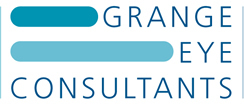How does corneal cross-linking work?
Corneal cross-linking is a technique for strengthening the cornea and its main use has been in the treatment of Keratoconus. Keratoconus is a condition where the cornea, the part of the eye we put a contact lens on, bulges and the reason it bulges is that the cornea is very elastic.
Why cross-linking occurs.
Now there’s a very able Swiss ophthalmologist called Professor Theo Seiler who observed that as we become older our corneas become stiffer and thicker, and he recognized that that was because of UV light on the cornea, ultraviolet light on the cornea. And ultraviolet light stiffens the cornea and the reason it stiffens the cornea is because there’s a substance in the cornea called collagen. And there are fibers of collagen in the cornea that are so-called, cross-linked. So there’s, it’s almost like a ladder, there’s a fiber with rungs between the fibers. And if you increase the stiffness of the collagen and the rungs between the fibers you gross link the cornea, so that’s a naturally occurring process.
Difference between older and younger corneas.
Now in Keratoconus patients who are typically young the cornea has become more and more distorted, so one wishes to try and stop that distortion happening. Now if we age the cornea of a young person to the cornea of a 90-year-old we will stop the process and in some patients get reversing the process.
How we medically cross-link a cornea.
And medically how we cross-link a cornea is to use a dye called riboflavin which gets absorbed into the cornea and then we then simply shines ultraviolet light on the cornea. The riboflavin will absorb the ultraviolet light and enable the collagen in the cornea to become cross-linked. So the end result is the cornea will become stiffer, the Keratoconic process will be arrested and in some patients reversed.
About the Author

Mr Robert Morris
BSc(Hons), MB BS (Hons), MRCP, FRCS, FRCOphth
Consultant Ophthalmic Surgeon
Robert Morris trained at St Bartholomew’s Hospital part of the University of London. He graduated with Honours in his final examinations. Robert completed his post-graduate ophthalmic training at the renowned units in Oxford Eye Hospital and London’s Moorfields Eye Hospital. Within the NHS, he has had a high volume cataract surgery practice and performed over 12,000 cataract procedures. He has an interest in squint surgery and is a national expert in this field. In addition to his NHS work, Robert manages a successful independent private practice. He continualy updates his training to keep abreast with the latest technology and techniques in refractive surgery.
